Pork Tenderloin with Mustard Glaze
- By Jennifer Segal
- Updated December 18, 2024
- 370 Comments
- Leave a Review

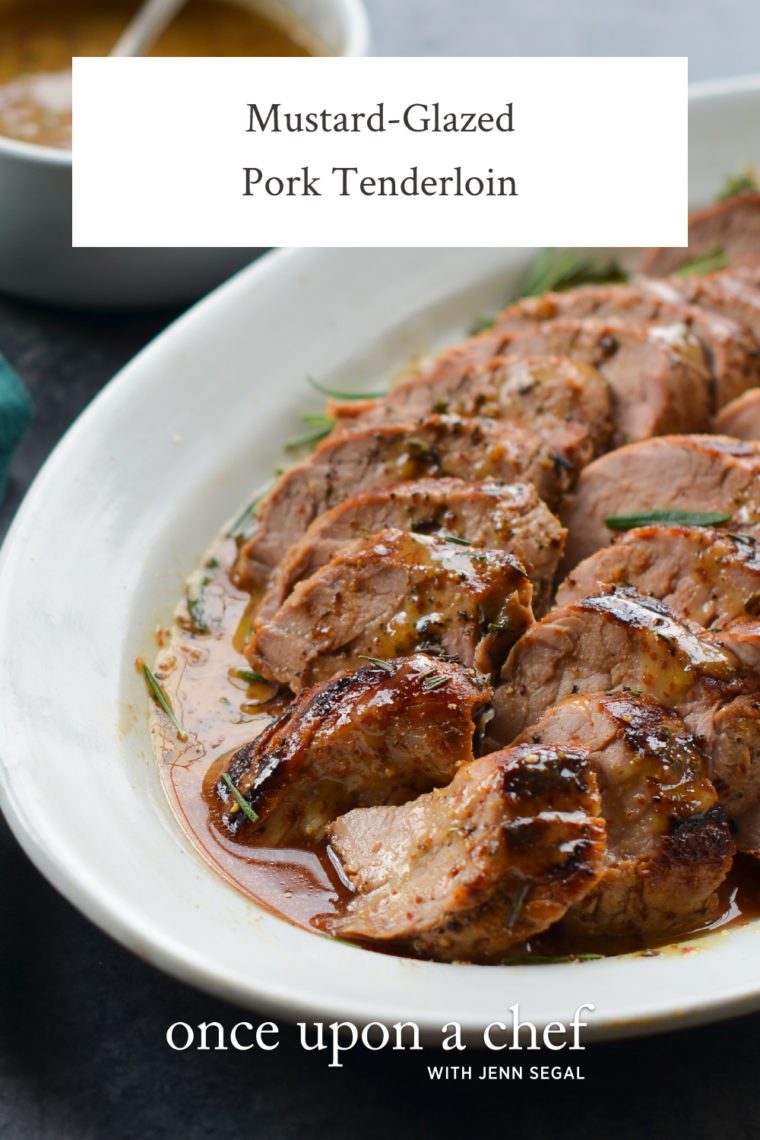
This post may contain affiliate links. Read my full disclosure policy.
This pork tenderloin recipe with a sweet mustard glaze is an easy, elegant way to turn any night into a special occasion—weeknight dinners included!
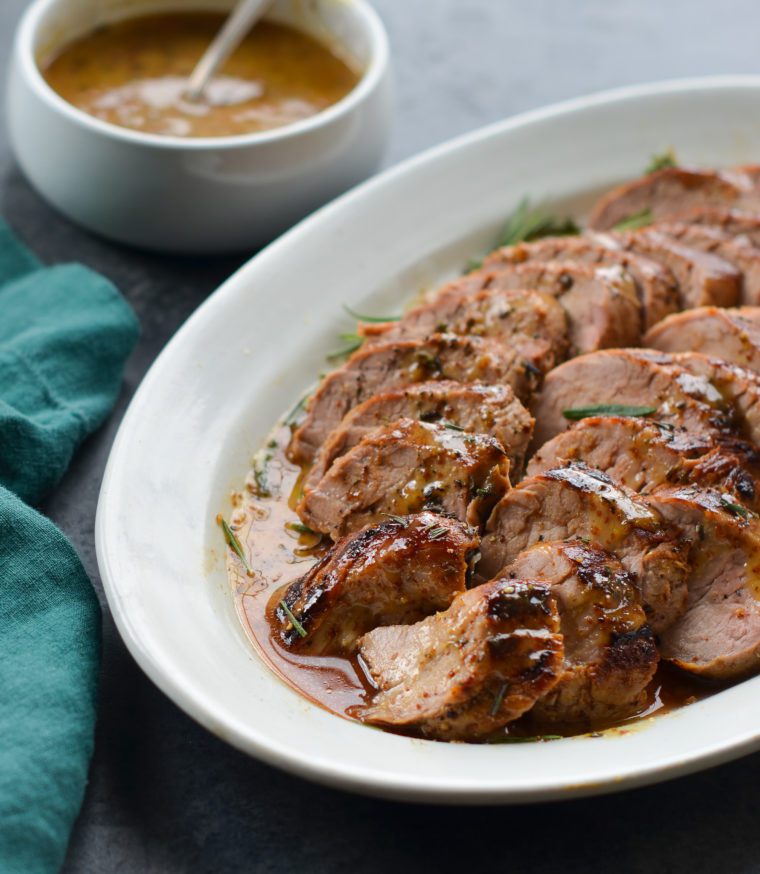
Adapted from cookbook author and food columnist Marian Burros’ 5-star mustard-glazed pork tenderloin—first featured in The New York Times in 1989—this marinated and sear-roasted dish is perfect for both fancy weeknight dinners and special occasions. The marinade, a simple blend of mustard, brown sugar, rosemary, and sherry, infuses the tenderloin with a savory-sweet flavor while doubling as the base for a rich sauce.
Serve it alongside mashed sweet potatoes and French green beans for an effortlessly elegant meal.
“I made this for Christmas Eve dinner and doubled the recipe. It’s Christmas Day and my family is still talking about last night’s meal.”
What You’ll Need To Pork Tenderloin with Mustard Glaze
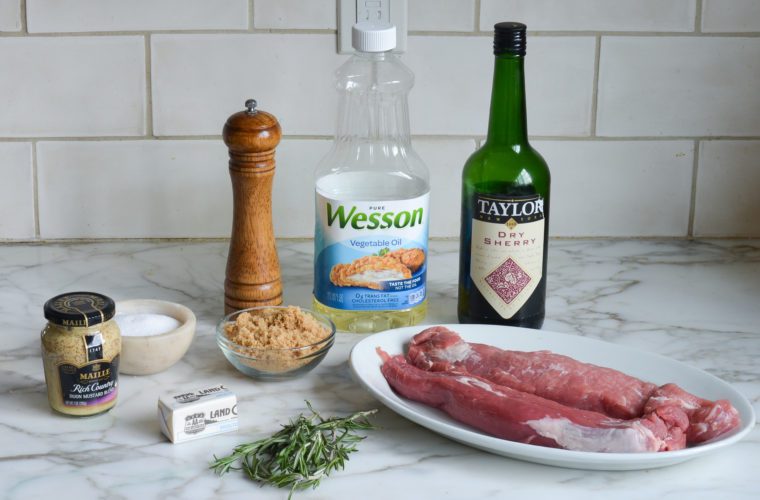
- Pork Tenderloins: Lean, tender, and perfect for marinating and roasting, tenderloins cook quickly but require care to avoid drying out. Each loin weighs about 1 pound, so you’ll need 2 of them.
- Light Brown Sugar: Adds a subtle sweetness that balances the tangy mustard and rich sherry.
- Grainy Dijon Mustard: Delivers bold flavor and texture in both the marinade and sauce.
- Dry Sherry: A fortified wine with a rich, nutty flavor that adds depth to the dish.
- Fresh Rosemary: Provides earthy, aromatic notes that complement the pork.
- Salt and Pepper: Essential for seasoning the pork and enhancing the flavors of the marinade and sauce.
- Vegetable Oil: Used to sear the tenderloins to a golden-brown crust.
- Unsalted Butter: Finishes the sauce, creating a smooth, velvety texture.
- Jump to the printable recipe for precise measurements
Step-by-Step Instructions
In a medium bowl, whisk the brown sugar, mustard, sherry, and rosemary.
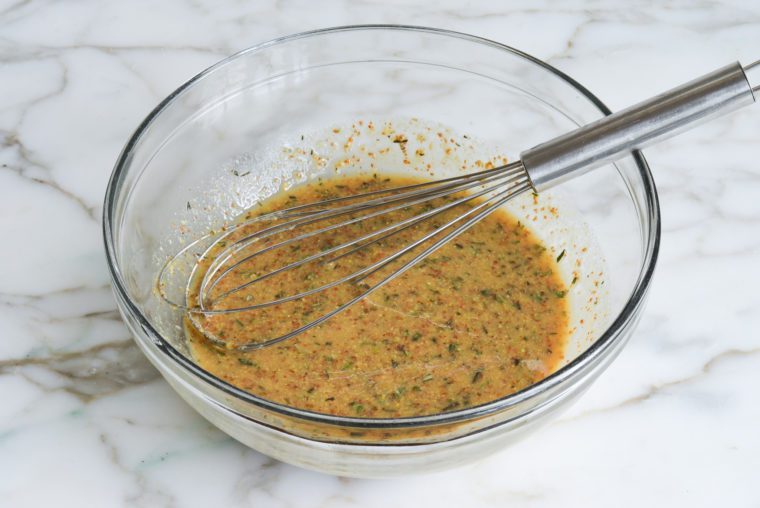
Place the tenderloins in a dish, season with salt, and coat with one-third of the marinade. Marinate for 1 hour or overnight. Refrigerate the remaining marinade to use as the sauce base.
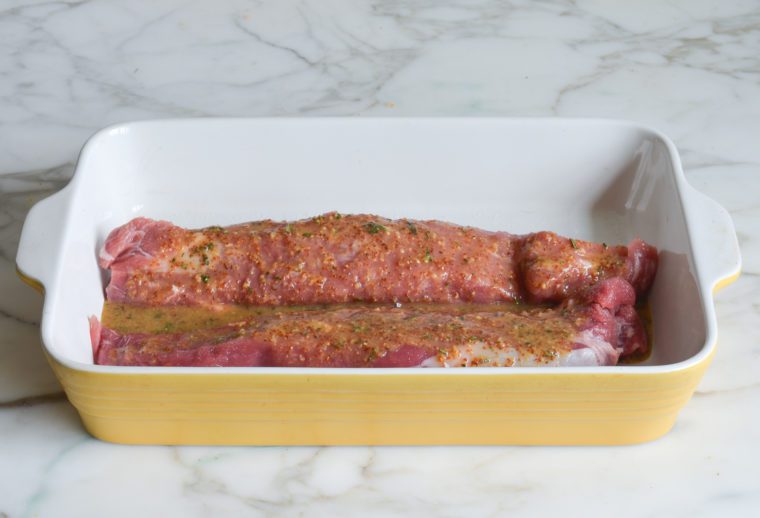
Heat the oil in a large cast iron or oven-safe skillet over medium-high heat and add both tenderloins. Sear on all sides until nicely browned, then transfer the skillet to a preheated 350°F-oven and cook until the pork registers about 140°F on an instant-read thermometer, 12 to 15 minutes.
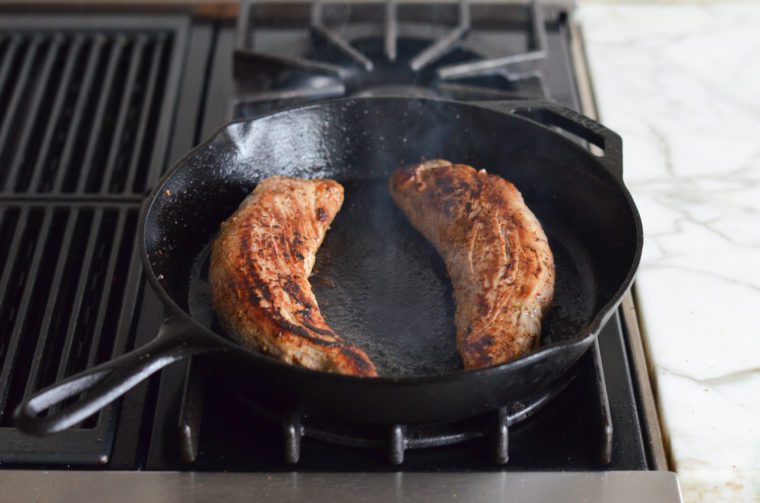
Meanwhile, pour the remaining marinade into a small skillet and bring to a gentle boil over medium-high heat. 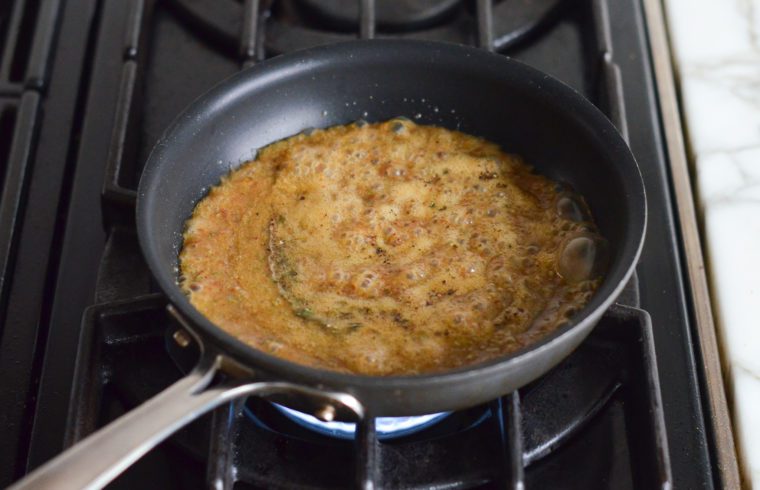
Remove the pan from the heat and, stirring constantly, incorporate the butter one piece at a time. This technique is known as “mounting.” Add ⅛ teaspoon salt and a few grinds of pepper.
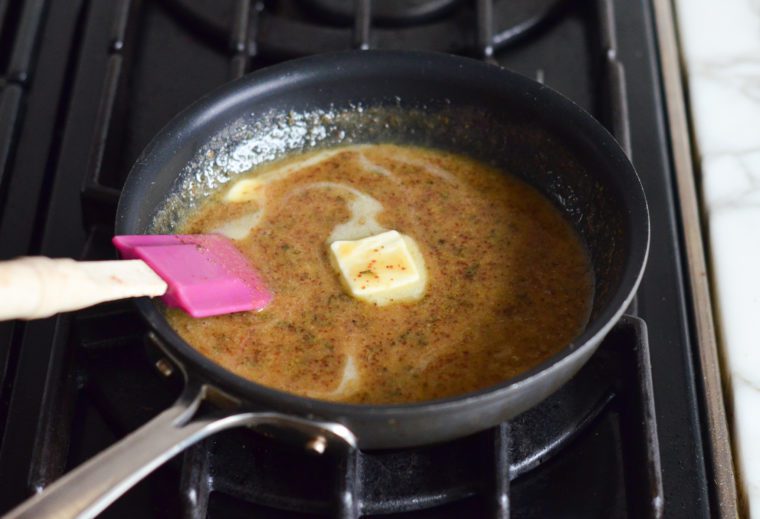
Remove the skillet from the oven and transfer the tenderloins to a cutting board. Tent with foil and let rest for about 10 minutes, then slice.
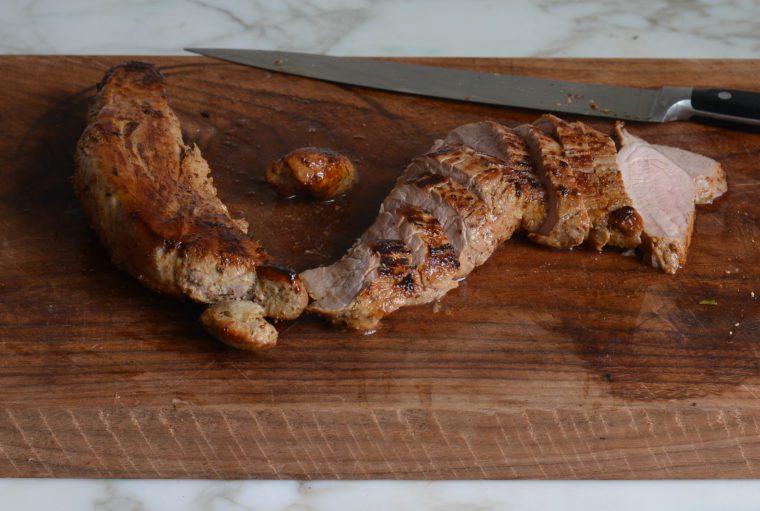
Arrange the sliced tenderloin on a platter and drizzle with a bit of the sauce; pass the remaining sauce at the table.

Video Tutorial
You May Also Like
Pork Tenderloin with Mustard Glaze

This easy pork tenderloin recipe combines savory-sweet flavors and a rich sauce—perfect for both weeknight meals and entertaining.
Ingredients
- 2 pork tenderloins (1¾ to 2 lbs total)
- ½ cup (packed) light brown sugar
- ½ cup grainy Dijon mustard (such as Maille Rich Country Dijon Mustard Blend or Grey Poupon Country Dijon)
- ½ cup dry sherry
- 1 tablespoon chopped fresh rosemary
- Salt
- 1 tablespoon vegetable oil, for cooking
- Freshly ground black pepper
- 5 tablespoons unsalted butter, cut into 5 pieces
Instructions
- Pat the tenderloins dry with paper towels.
- In a medium bowl, whisk together the brown sugar, mustard, sherry, and rosemary.
- Place the tenderloins in a baking dish or bowl. Season all over with 1¼ teaspoons salt and pour about one-third of the marinade over top. Turn the tenderloins a few times to coat evenly with the marinade. Marinate for at least 1 hour or as long as overnight (the longer, the better). Cover the remaining marinade and refrigerate until ready to use (it will form the base of the sauce).
- Preheat the oven to 350°F and set an oven rack in the middle position.
- Heat the oil in a large cast iron or oven-safe skillet over medium-high heat (see note below if you don't have one of these pans). Add both tenderloins and sear on all sides until nicely browned, 6 to 8 minutes (don't move the tenderloins around between turns; they will brown better if left alone). Transfer the skillet to the oven and cook until the pork registers about 140°F on an instant-read thermometer, 12 to 15 minutes. (To check for doneness without a thermometer, make a slit in the thickest part of the loin; the meat should be mostly white with a slight hint of pale pink, and the juices should run mostly clear.)
- Remove the skillet from the oven and immediately place an oven mitt or dishtowel over the handle to remind yourself that it is hot (it is easy to forget and burn yourself!). Transfer the tenderloins to a cutting board. Tent with foil and let rest for about 10 minutes, then cut into ¼- to ½-inch slices.
- Meanwhile, pour the remaining marinade into a small skillet and bring to a gentle boil over medium-high heat. Remove the pan from the heat and, stirring constantly, incorporate the butter one piece at a time. Add ⅛ teaspoon salt and a few grinds of pepper. Taste and adjust seasoning if necessary. Arrange the sliced tenderloin on a platter and drizzle with a bit of the sauce; pass the remaining sauce at the table.
- Note: If you don't have an oven-proof skillet, transfer the pork to a foil-lined sheet pan after searing. (The foil is just for easy cleanup.) You may need to add a few minutes to the baking time.
- Note: The nutritional information includes all of the ingredients for the marinade, so one serving is likely significantly lower in calories and fat than the numbers below.
Pair with
Nutrition Information
Powered by ![]()
- Per serving (6 servings)
- Calories: 336
- Fat: 17 g
- Saturated fat: 8 g
- Carbohydrates: 14 g
- Sugar: 12 g
- Fiber: 1 g
- Protein: 28 g
- Sodium: 438 mg
- Cholesterol: 111 mg
This website is written and produced for informational purposes only. I am not a certified nutritionist and the nutritional data on this site has not been evaluated or approved by a nutritionist or the Food and Drug Administration. Nutritional information is offered as a courtesy and should not be construed as a guarantee. The data is calculated through an online nutritional calculator, Edamam.com. Although I do my best to provide accurate nutritional information, these figures should be considered estimates only. Varying factors such as product types or brands purchased, natural fluctuations in fresh produce, and the way ingredients are processed change the effective nutritional information in any given recipe. Furthermore, different online calculators provide different results depending on their own nutrition fact sources and algorithms. To obtain the most accurate nutritional information in a given recipe, you should calculate the nutritional information with the actual ingredients used in your recipe, using your preferred nutrition calculator.
See more recipes:
Comments
Add a Comment Cancel reply
This site uses Akismet to reduce spam. Learn how your comment data is processed.
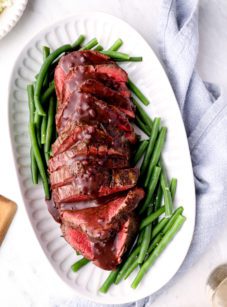
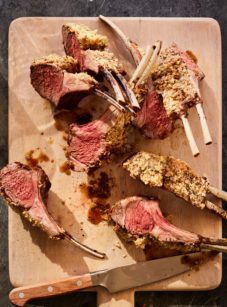

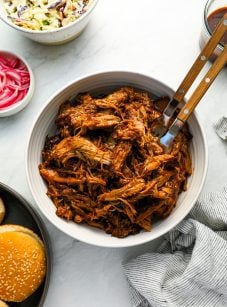
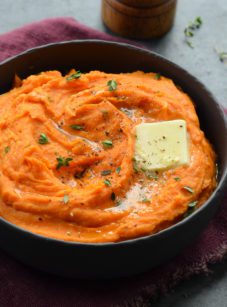

This was delicious! Made this tonight for dinner and the whole family loved it. It was easy to make, very tender (I was only able to marinate for 3 hours), and the sauce was perfect with it. I forgot to buy rosemary, so used Herbs de Provence. I also made the sauce right in the cast iron pan after I removed the meat to rest, which worked great for less to clean.
You are my go-to for many recipes and the first site I check when looking for a new recipe. Thank you for making me look like a great cook every time!
Is there a substitute for you can suggest for the Sherry?
Hi Laura, you can use apple juice or apple cider in place of the sherry. Enjoy!